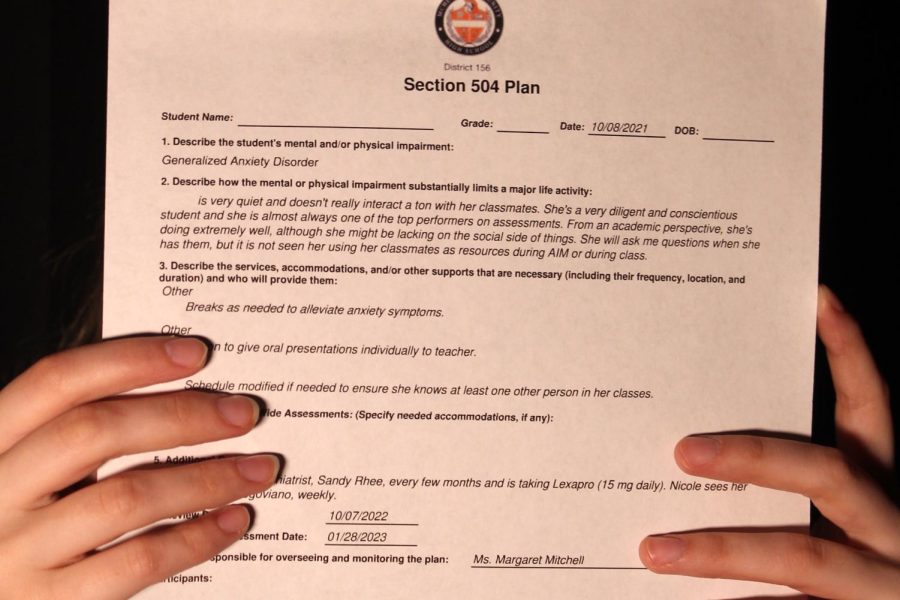Equal access
Accommodations included in 504 plans and IEPs allow students with mental and physical disabilities to have equal access to education
504 plans and IEPs are lists of special accommodations that students with special needs receive in order to level the academic playing field. But many “mainstream” students don’t even know that such plans exist and what they are for.
February 28, 2022
A student takes a deep breath before stepping out of her car and heading into school. She has an anxiety disorder, making everyday things seem extremely taxing. The only reason she’s able to make it through the day at school is because of the accommodations she has through her 504 plan.
A 504 plan is a modified education plan to help students with physical or mental disabilities have more equal opportunities to learn.
“It’s like an extra help type of thing,” says sophomore Maddi Wagner, “like extra add ons you can have.”
These accommodations, like those given to special education students in an Individualized Education Program, allow students to have a more equal opportunity to learn in their school environment, despite whatever physical or mental disability they may have.
“I was allowed to do certain things that other students could not,” says junior Thomas Rosegay. “I was allowed to get up and move around without being reprimanded. I could chew gum in classes where it wasn’t allowed. I was given extra test time…and they were kind of more lenient on me talking out of turn because of ADHD.”
504 plans are set to fit students’ individual needs and diagnosis. The accommodations tailor to what makes the most sense for each person’s situation.
Social worker Margaret Mitchell says, “When were deciding on accommodations for the students, we have to look at it in relation to the reason they have a 504. So let’s say a student is experiencing some anxiety, but that’s not what their 504 plan is for. We can’t necessarily add accommodations in that would specify anxiety if we don’t have that documented as one of the reasons they have a 504 plan.”
There is a process that students must go through in order to get a 504 plan, as it does involve medical information and parental approval.
Mitchell says, “We always ask for documentation of the disability or reason they have a 504 first…It typically will result in having an official 504 evaluation meeting. Typically. The school psychologist is involved and does a few more in-depth questions, we have a coordinator there as well.”
However, this long process can be worth it to those who need these accommodations to thrive in the school environment.
“I think, primarily, from the social-emotional aspect, a lot of students are relieved and more comfortable,” says Mitchell, “when they realize that they can take breaks as needed or that they have someone that’s always available for them to check in with.”
Of course there can be some downsides to these plans, whether it be the process of getting one in place or even after the plan is in place.
“A lot of teachers don’t listen to it or follow it, and when I do tell them I have a 504 and that I need the extra time they won’t give it to me,” says Wagner.
Issues like this can be solved through following up with the student’s case manager, allowing them to remind teachers of the students’ accommodations.
“There can definitely be push-back, I think, any time you are advocating for the needs of an individual,” says Mitchell, “especially when you’re advocating for the needs of a minor or someone who can’t really advocate for themselves.”
But for most students, dealing with the process of getting the plan and any push-back along the way is worth it. This allows them to feel more comfortable at school, and it gives them more access to an equal education that everyone deserves.












